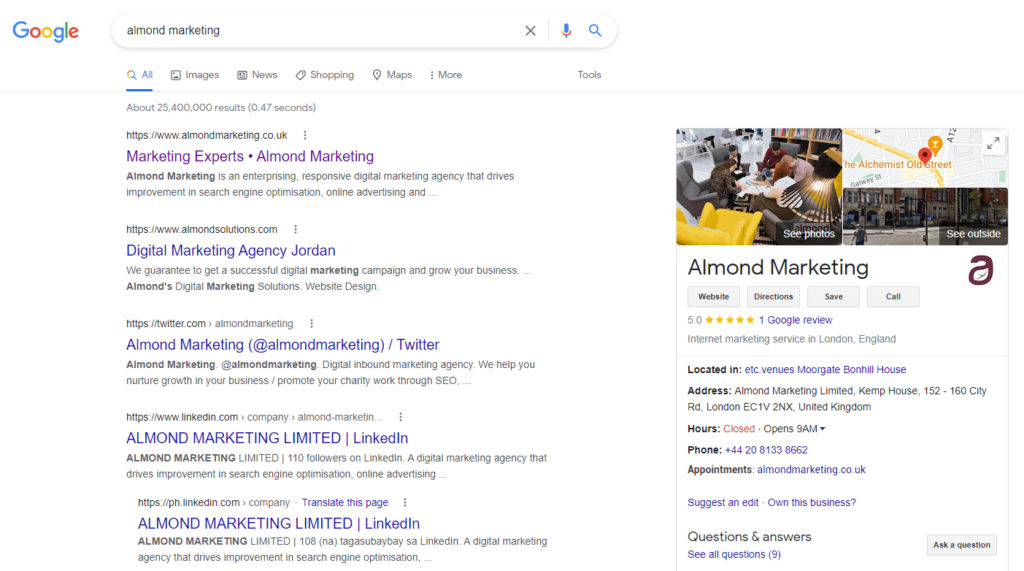
In the middle of 2018, Google announced that they would be tweaking their algorithm to pay extra scrutiny to the way that websites (and the people behind them) can demonstrate expertise, authority, and trustworthiness (E-A-T) within their industry.
Although Google was initially targeting specific industries with this update (namely industries where misleading potential customers could gravely affect their future health and wealth – medical and legal industries for example), the ability to demonstrate expertise, authority, and trustworthiness is becoming an increasingly important ranking factor for any website.
There are certain things that any business with a web presence should do in order to demonstrate a base layer of expertise and trustworthiness in their industry. We will go through them now. We will also make some more advanced recommendations for what Google is looking for with regard to E-A-T in industries such as law and finance where requirements are more stringent than normal.
The philosophy behind E-A-T
Before we dive into how exactly to demonstrate E-A-T, it’s well worth understanding why Google values this as a ranking factor, and what the search engine is trying to achieve by favouring websites that can demonstrate E-A-T.
Google understands that the barrier to entry in creating a website, and even an online business, is very low. The search engine, therefore, wants to give reduced exposure to online businesses that either do not have a track record of delivering good value to customers, or who are not in a position to dispense professional advice.
By the same token, the search engine wants to give increased exposure to businesses and websites that benefit their (potential customers).
Google, therefore, looks to certain signs that a business or website is “legitimate” and likely to offer value to visitors and potential customers. Exactly these signals are varied from industry to industry, however, there are some requirements and concepts that are universal across all industries to demonstrate E-A-T.
Here are some of the most common ones:

1. Your website should have a location verified with Google My Business
One of the simplest ways that businesses can establish E-A-T is by having a location that is registered with Google through claiming your Google My Business profile.
Simply by virtue of having a physical location, Google views your website (and the business behind it) as having more “skin in the game” than a website without an attached location.
The logic here is that if you have invested in physical premises for your business, the chances are that you are in your industry for the long term, and this thinking should raise the quality of the service or products that you provide for your customers. These are the types of businesses that Google wants to promote.
Even if you are a completely digital business, or operate out of a residential address, you can still claim a Google My Business profile with a residential address.
Although there are examples of websites and businesses that get a lot of organic traffic without having locations verified with Google My Business, these often establish E-A-T through the size and recognition of their brand. For smaller and new businesses, having an established address can help no end with organic visibility by virtue of gaining increased E-A-T in the eyes of Google.

2. The people in your company should be listed on your website
When measuring E-A-T, Google looks to the expertise of the people in your business and bases their trust in this on evidence that it crawls on the internet.
It’s, therefore, a good idea to list the people in your business on your website. An ideal place for this would be on your “about us” or “meet the team” page.
For professional service providers, such as medical practices and financial institutions, your staff profiles should contain the qualifications and credentials of each person in your team.
Even businesses that do not require professional qualifications of personnel, it is still worth mentioning any experience that your team has in their industry. Such experience gives your business a higher level of expertise and authority than one that does not have such experience.
You should also set up a Linkedin profile for your business, with all staff members listed. This should correspond with your “about us”/”meet the team” page and the two should be linked together. This can “double-verify” that the information about your team on your website is correct.
3. You should be listed on relevant professional organisations
Google looks at your website’s digital footprint as a whole when measuring your E-A-T.
A factor that the search engine pays particular attention to when evaluating this is the website of professional bodies and organisations.
This makes sense, as membership in these professional organisations is one of the clearest pieces of evidence for someone’s expertise in a particular industry.
Most professional organisations have websites where they list members and alumni. If you are a member of any organisation then you should be listed on these websites. If you are not yet listed, then simply reaching out to these organisations and asking for a listing should make this happen.
If you can, try to get this organisation website’s to link out to your website. This provides your business with a powerful link as well as helping establish E-A-T.
Features and mentions in industry magazines and journals (particularly the more established ones) also help with establishing your business’s E-A-T in much the same way.
If you have some genuine industry insight then reach out to the editors of these magazines and ask if you can write a feature for them. It is often a struggle for editors to churn out content so if your idea is good you may well be taken up on this.

4. Make sure the information on your website is factually correct and properly cited
For industries that are tied into hard empirical science (this can range from medical professionals to florists who are linked to botany) Google tags to content that falls under “scientific research” and uses this as the yardstick to measure the veracity of any post that makes scientific claims.
This means that any posts that you have on your website that contradict, or fail to take into account, current scientific research as potentially untrustworthy. This can affect the organic visibility of your business as a whole.
You should ensure that your content keeps up to date with any scientific findings related to your industry. This often includes updating older posts to keep in line with the latest findings. Such articles should be cited properly, referencing academic or government studies where possible. Looking for articles that have the tld “.edu” or “.gov” can help you ensure that you are citing the right kind of information to keep in line with E-A-T.
Wrapping up
Google’s additional scrutiny for signals of E-A-T is simply part of a wider strategy to help legitimate businesses that are run by true industry experts.
If your business, and its website, fall under this category then you should expect to benefit from any algorithm update involving E-A-T.
It is still worth making sure that you make these signals of E-A-T as clear as possible to search engines.
This post was contributed by Oli Graham, Marketing Manager for the digital content agency RightlyWritten.





